| Ethereal
Bouldering No-Hands Problems |
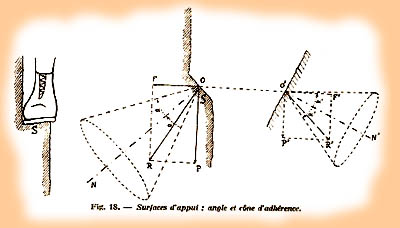 |
|
Reflections
& Commentary: Page 3.1
|
| Ethereal
Bouldering No-Hands Problems |
 |
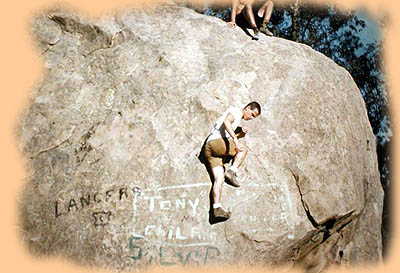 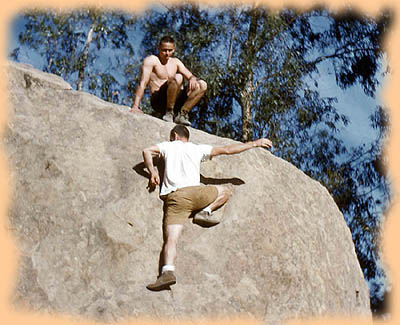 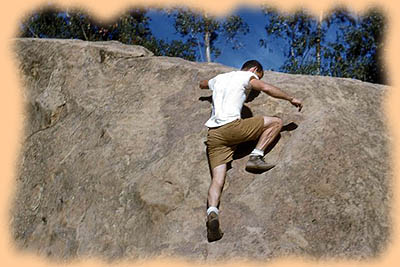 |
Bob
Kamps was the master of these
balance problems. Here we see Bob at Stoney
Point about 1960. He's
being observed by his frequent climbing partner, the
mathematician/gymnast/climber Dave Rearick. Bob
was the most skilled rock climber I knew when it came to the use of
marginal footholds and pure balance technique. We had great fun trying
to outdo one another tip-toeing up the boulders. The idea was to maintain the least contact with the rock while ascending. The use of arms, hands, shoulders and stomach were discouraged, but frequently it was virtually impossible to avoid contact with parts of the lower body above the feet. Nevertheless, the goal was minimum contact with the rock. There is no existing grading structure for such climbing divertissements, for the need does not arise in discussions of bouldering among contemporary climbers - almost all of whom interpret bouldering as merely microclimbing with some additional dynamics. I find it a little puzzling that slacklining has become popular, when no-hands climbing, which seems to attract very few boulderers, is so much closer to traditional rock work. But then, the latter requires no special equipment. Photos courtesy Bonnie Kamps |
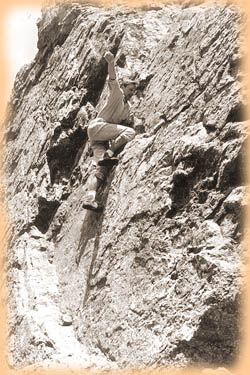 |
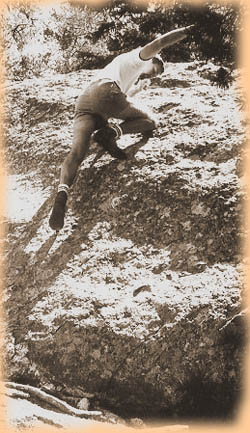 |
| Sometimes,
extending the no-hands approach to actual climbs can be challenging . .
. as in the first no-hands ascent of the Needle
in
Estes Park in the mid 1960s. It was hard for me to keep my left
shoulder away from the rock. On my no-hands eliminate problem on Falling Ant Slab at Jenny Lake in the mid 1960s, a slip could mean a painful tumble down a steep slope and into the lake 40 feet below. |